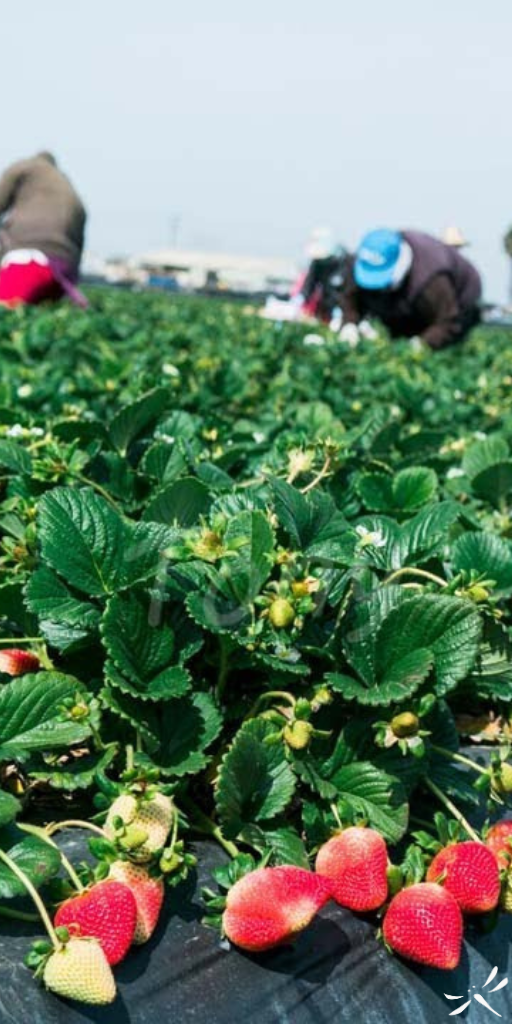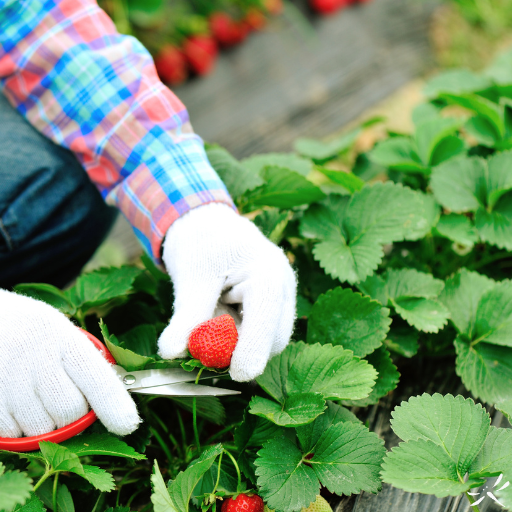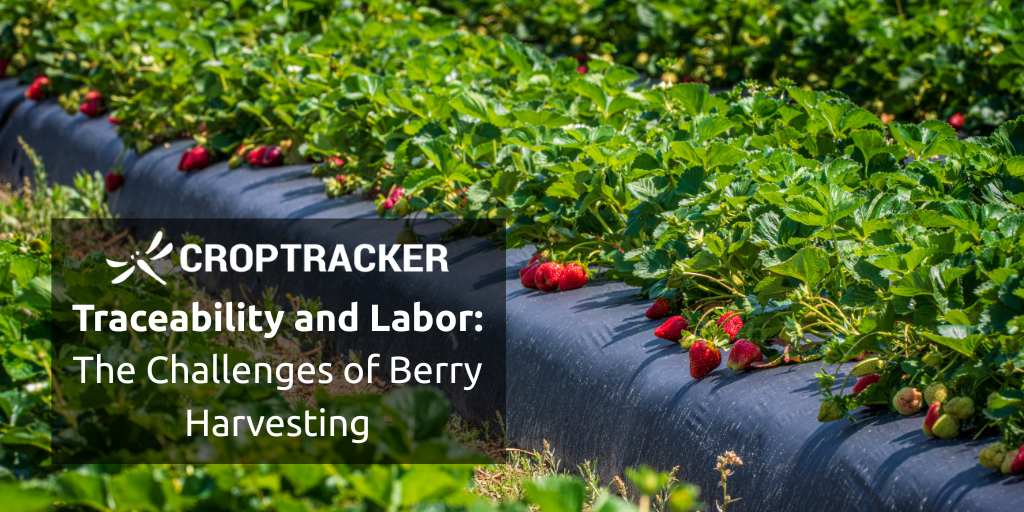This blog is part one of a series on berry harvest. Part one on the challenges of harvesting berries by hand. Part two offers solutions to some of these challenges using Croptracker. Find part 2, Croptracker Feature Use Case: Speed Scanning for Berry Harvest here.


Seasonal Hand Harvesting Challenges
The primary method for harvesting berries is by hand. Berries are delicate and ripen at different times, requiring careful selection to ensure only ripe fruit is picked. Strawberry pickers for example are instructed to grab the stem just above the berry and gently twist and pull. Ripe strawberries are bright red and will not continue to ripen after being picked so pickers need to discern quickly which berries should be left on the vine for a next round of picking.
There continue to be attempts to mechanize berry harvesting, but so far these soft robotics have yet to be proven to be efficient enough to scale. While the tech to make the physical robot is available, the challenge of training a computer vision system to assess the environment for picking the right berry as fast as a human remains elusive.
Hand picking creates a high demand for seasonal labor. This can be a significant cost, and some growers struggle to find enough workers. Most berry farms need to use offshore labor programs to supplement their local workforce. In Canada for example, many growers use the Seasonal Agricultural Worker Program (SAWP) and the Agriculture stream of the Temporary Foreign Worker (TFW) program to ensure they have the workforce they need to keep up with harvest.
Maintaining a profitable business that requires hand picking requires a lot of organizational and operational excellence. Seasonal worker programs often come with added expenses like travel and administrative fees, making it all the more important to ensure cost saving wherever possible. Increasingly unpredictable weather conditions like hot and wet climates can drastically shorten the harvest window making it absolutely vital for pickers to ensure nothing is slowing them down while in the field.
Piecerates and Payroll Problems
One of the challenges to many berry growers is tracking productivity and payroll properly given various hourly wages, per piece pay rates, and SKUs. Many berry farms use a "piece rate" system, where workers are paid for each container they pick. While this can incentivize speed and productivity, it also creates several challenges:
- Accuracy: Manually tracking the number of containers each worker picks can be prone to errors and disputes. Different purchasers will require different product configurations (SKUs), quality and labelling, making decisions around packing and tracking more complicated.
- Quality vs. Speed: piece-rate system can encourage workers to prioritize quantity over quality, leading to a higher risk of bruised or unripe fruit being harvested.
- Administrative Burden: Manually calculating payroll, especially for a large seasonal workforce with a piece-rate system, is time-consuming and can lead to clerical errors. This includes tracking hours worked, calculating bonuses, and ensuring compliance with labor laws.
- Transient Workforce: The seasonal and temporary nature of the harvest workforce can make it difficult to maintain consistent records and build trust between employers and employees. The programs themselves are often criticized by employers and employees and have room for improvement.

Traceability Challenges in the Field
When berries are harvested into consumer containers in the field it is crucial to accurately track this starting point in the supply chain for a few reasons:
- Food Safety and Recalls: This is the most critical function of traceability. If a food safety issue or contamination is discovered, a well-implemented traceability system allows growers to quickly and precisely identify the source. By tracking a specific retail container back to a particular field, block, or even the individual picker, growers can isolate the affected product without having to recall an entire season's harvest. This minimizes financial loss and protects public health.
- Quality Control and Brand Reputation: Berries are delicate, and their quality can be highly variable. A traceability system allows growers to link the quality of the berries in a specific container to the conditions under which they were harvested. For example, if a consumer reports a punnet of berries that were mushy or overripe, a grower can trace the container back to the specific day and field it was picked from. This data can inform future decisions about harvest timing, picker training, and crop management, ensuring more consistent product quality and building consumer trust in the brand.
- Operational Efficiency: Beyond safety and marketing, traceability data is a powerful tool for improving farm operations. By tracking which fields and pickers are producing the highest quality and quantity of berries, a grower can make data-driven decisions about resource allocation, training, and overall farm management. This allows for a more profitable and efficient operation.

These intricate challenges in berry harvesting—from the high demand for seasonal labor and the complexities of piece-rate payroll to the critical need for field-level traceability—highlight why growers must adopt smarter, more efficient solutions. Overcoming these hurdles is essential for maintaining profitability, ensuring food safety, and protecting brand reputation in an increasingly competitive and unpredictable market. In part two of this series, we will explore how technology, specifically tools like Croptracker's speed scanning feature, can address these very issues, turning these challenges into opportunities for growth and efficiency.


